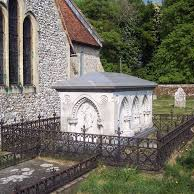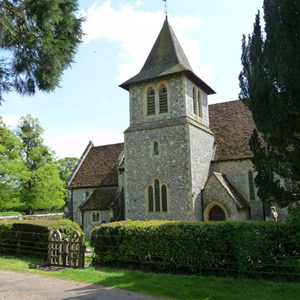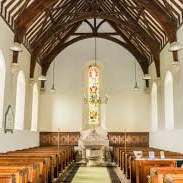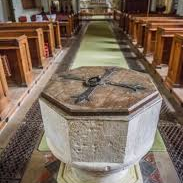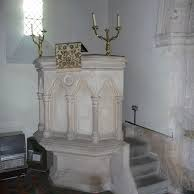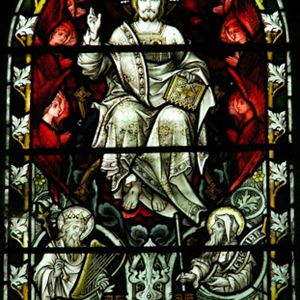St.Peters Church
The Church in the Field
Just north of the village hall stands the parish church of St Peter, set back from the road looking out over farm fields. The church is known for obvious reasons as 'The Church in the Field'.
A large manor house stood beside the church since the reign of Henry III, but this fell into disrepair and was pulled down in 1903, leaving the church without any neighbouring buildings.
The church is a simple building, with a nave, chancel, north transept tower, south transept, and north porch. The chancel and nave were built in the 13th century and remained unaltered until a comprehensive Victorian restoration from 1863, when the porch, vestry, transept, and tower were added. During building work on the tower foundations a silver penny dating to the reign of Henry III was discovered.
Most of the interior fittings are 19th century, though some late 17th century carved mouldings were reused in the pews and choir stalls. The wooden communion rail was brought from the manor house, and the credence shelf is constructed with pieces of a 17th century communion table.
The oldest feature in the church is the 13th century octagonal font, carved with moulding at the base and stem.
In the vestry window is a small section of 13th century glass depicting St Peter, and there are two more fragments of medieval glass in the porch windows, showing a bishop and archbishop.
St Peter is a delightful country church, but it is the setting amid fields that makes the church so appealing to visit.
Services
Details of services can be found here
There is also a facebook group covering all of the churches in the benefice which can be accessed at https://www.facebook.com/groups/ThorngateChurches
St Peter's is kept open for visitors.
Location
East Tytherley, Hampshire, England, SP5 1LG
On the west side of the road through East Tytherley, just north of the village hall
Location map
Contact
Rev James Pitkin
The Vicarage The Street Lockerley Romsey SO51 0JF
(01794) 340635
The Giffard Memorial
The Victorian restoration swept away most of the medieval tombs, with one notable exception. At the west end of the nave is a striking 16th century memorial to Richard Giffard, who died in 1568 at the age of 69.
There are small effigies of Giffard and his wife Anne. Richard is shown dressed in armour, while Anne and their three sons William, John, and Henry are shown in civilian dress, as is their daughter Katherine, wife of Sir Henry Wallop of Farley. The top of the memorial is beautifully decorated with the Giffard arms. On the tomb is a funeral helm with a wooden crest.
Lancet lights
The chancel is lit by seven original lancet lights, three to the east and two each to north and south, with plain rear arches and splays and external chambers and rebates for wooden glazing frames. One of these (on the north) now opens into the vestry.
The nave was originally lit by six lancets on each side similar to, but larger than, those of the chancel, and arranged three on each side of the north and south doors.
In the west wall is a large lancet of the same date as the others and also with the external rebate.
The south transept has a window of three lancet lights on the south and an external door to the east.
Font
The late 13th-century font has an octagonal bowl and a circular moulded stem and base
Bells & Bell Ringers
There are eight bells in the modern tower.
The tenor weighs 14 cwt, cast by John Taylor & Co. in 1897 (the two trebles were added two years later). The bells have not been rehung and are still on original plain bearings; this, coupled with a fairly long draft, make them slightly harder to ring than the bells at Lockerley and less suitable for teaching learners, although most ringers have little difficulty ringing them.
The second bell is hung above the other bells making it harder to hear above the sound of the other bells, a sound tube has just been installed to improve the sound balance in the ringing room. Work has been carried out to install sound insulation which makes the sound level in the ringing room far more comfortable than previously.
The Lockerley and East Tytherley Bell Ringers are an active band ranging in age from 9 to 87 years old. The band has a reputation for being friendly and welcoming to visitors. They always go to the pub after practice on a Thursday, go for coffee after ringing for the service on a Sunday, and organise social events including an annual ringing outing and Christmas dinner.
Ringing times: Sundays: 9.45am, 3rd Sunday
Practices: Thursday 2nd & 4th
If you'd like to find out more, contact Jen Churchill (01794) 340600 .
